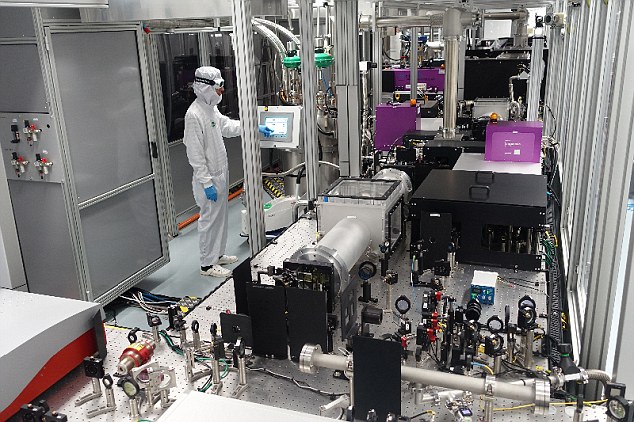CAPSLOCKSTUCK
Spaced Out Lunar Tick
- Joined
- Feb 26, 2013
- Messages
- 8,578 (1.92/day)
- Location
- llaregguB...WALES
| System Name | Party On |
|---|---|
| Processor | Xeon w 3520 |
| Motherboard | DFI Lanparty |
| Cooling | Big tower thing |
| Memory | 6 gb Ballistix Tracer |
| Video Card(s) | HD 7970 |
| Case | a plank of wood |
| Audio Device(s) | seperate amp and 6 big speakers |
| Power Supply | Corsair |
| Mouse | cheap |
| Keyboard | under going restoration |
A team of British and Czech scientists today said they had successfully tested a 'super laser' they claim is 10 times more powerful than any other of its kind on the planet.
The so-called 'high peak power laser' has a 1,000-watt average power output, a benchmark of sustained, high-energy pulses.
It has revolutionary potential in engineering, for hardening metal surfaces, processing semiconductors and micro-machining material.
http://www.stfc.ac.uk/research/lasers-and-plasma-physics/central-laser-facility/

Named 'Bivoj' after a mythical Czech strongman, the laser is '10 times as powerful' as any other of its type currently in use, HiLASE physicist Martin Divoky told AFP at the testing facility in Dolni Brezany near Prague.
HiLASE director Tomas Mocek told AFP that Bivoj broke the 'magical barrier' of 1,000 watts in output on December 16, setting a world record for lasers of its type.
'It's a huge step forward, like an Olympic victory,' he added.
Weighing in at around 20 tonnes and costing 44 million euros ($48 million or £38 million), Bivoj will have applications in the aeronautics, automotive and power sectors, according to the CLF and HiLASE specialists.
Mocek told AFP that Bivoj was fundamentally different from so-called peak power lasers.
There are two behemoths of this kind - the one-petawatt Texas Petawatt Laser in Austin and the two-petawatt Laser for Fast Ignition Experiments (LFEX) in Osaka, Japan. One petawatt equals one million billion watts
Those lasers 'have a very high peak power, but they can only reach it several times a day,' Mocek said.
'They do not have so-called 'average power'. This is a combination of the repetition rate and the energy.
'Our laser has the highest average power, which is important. The repetition rate in Osaka and Austin is significantly lower.'
https://www.afp.com/en/news/2265/brits-czechs-claim-worlds-most-powerful-super-laser
The so-called 'high peak power laser' has a 1,000-watt average power output, a benchmark of sustained, high-energy pulses.
It has revolutionary potential in engineering, for hardening metal surfaces, processing semiconductors and micro-machining material.
http://www.stfc.ac.uk/research/lasers-and-plasma-physics/central-laser-facility/

Named 'Bivoj' after a mythical Czech strongman, the laser is '10 times as powerful' as any other of its type currently in use, HiLASE physicist Martin Divoky told AFP at the testing facility in Dolni Brezany near Prague.
HiLASE director Tomas Mocek told AFP that Bivoj broke the 'magical barrier' of 1,000 watts in output on December 16, setting a world record for lasers of its type.
'It's a huge step forward, like an Olympic victory,' he added.
Weighing in at around 20 tonnes and costing 44 million euros ($48 million or £38 million), Bivoj will have applications in the aeronautics, automotive and power sectors, according to the CLF and HiLASE specialists.
Mocek told AFP that Bivoj was fundamentally different from so-called peak power lasers.
There are two behemoths of this kind - the one-petawatt Texas Petawatt Laser in Austin and the two-petawatt Laser for Fast Ignition Experiments (LFEX) in Osaka, Japan. One petawatt equals one million billion watts
Those lasers 'have a very high peak power, but they can only reach it several times a day,' Mocek said.
'They do not have so-called 'average power'. This is a combination of the repetition rate and the energy.
'Our laser has the highest average power, which is important. The repetition rate in Osaka and Austin is significantly lower.'
https://www.afp.com/en/news/2265/brits-czechs-claim-worlds-most-powerful-super-laser




